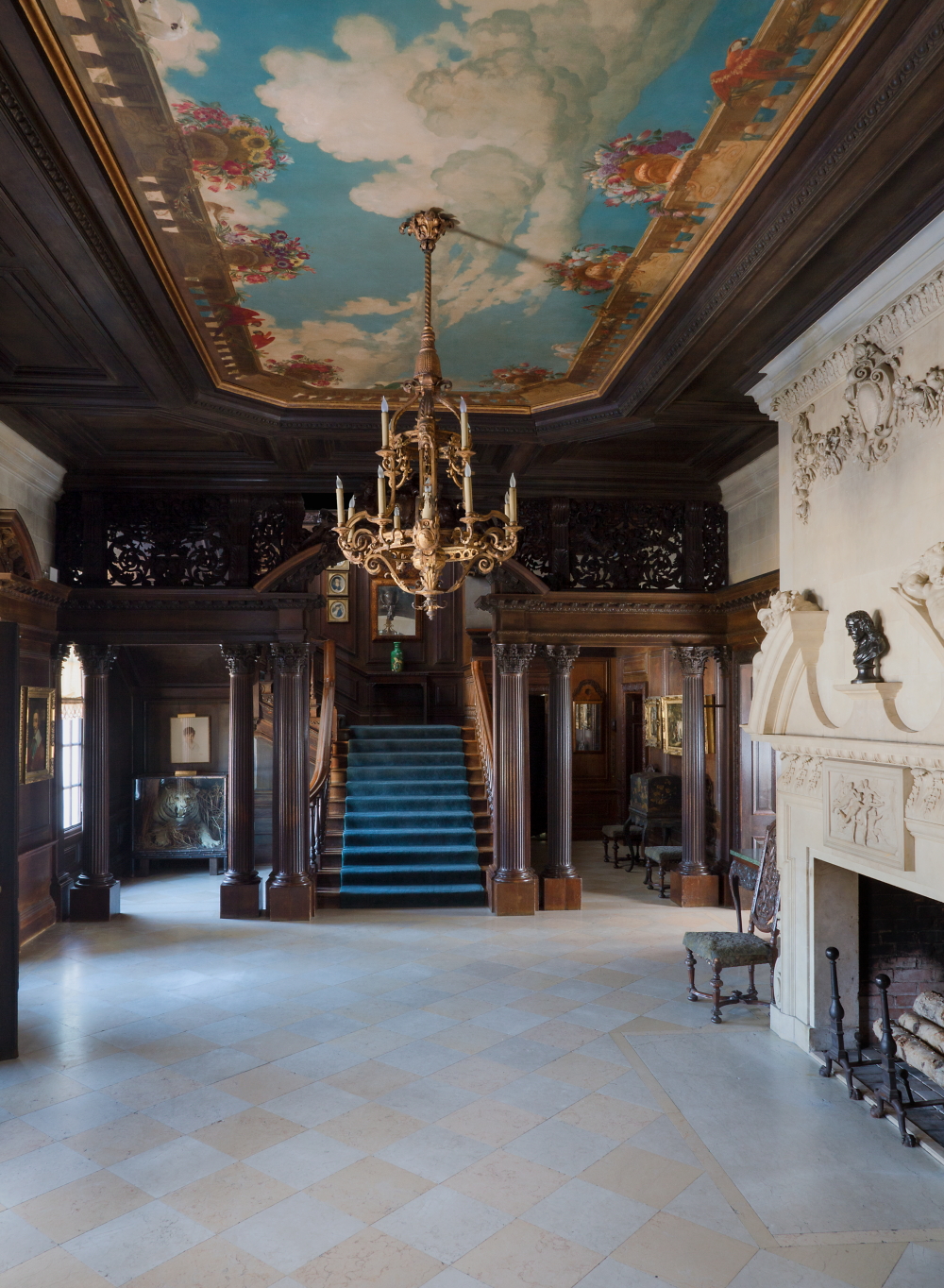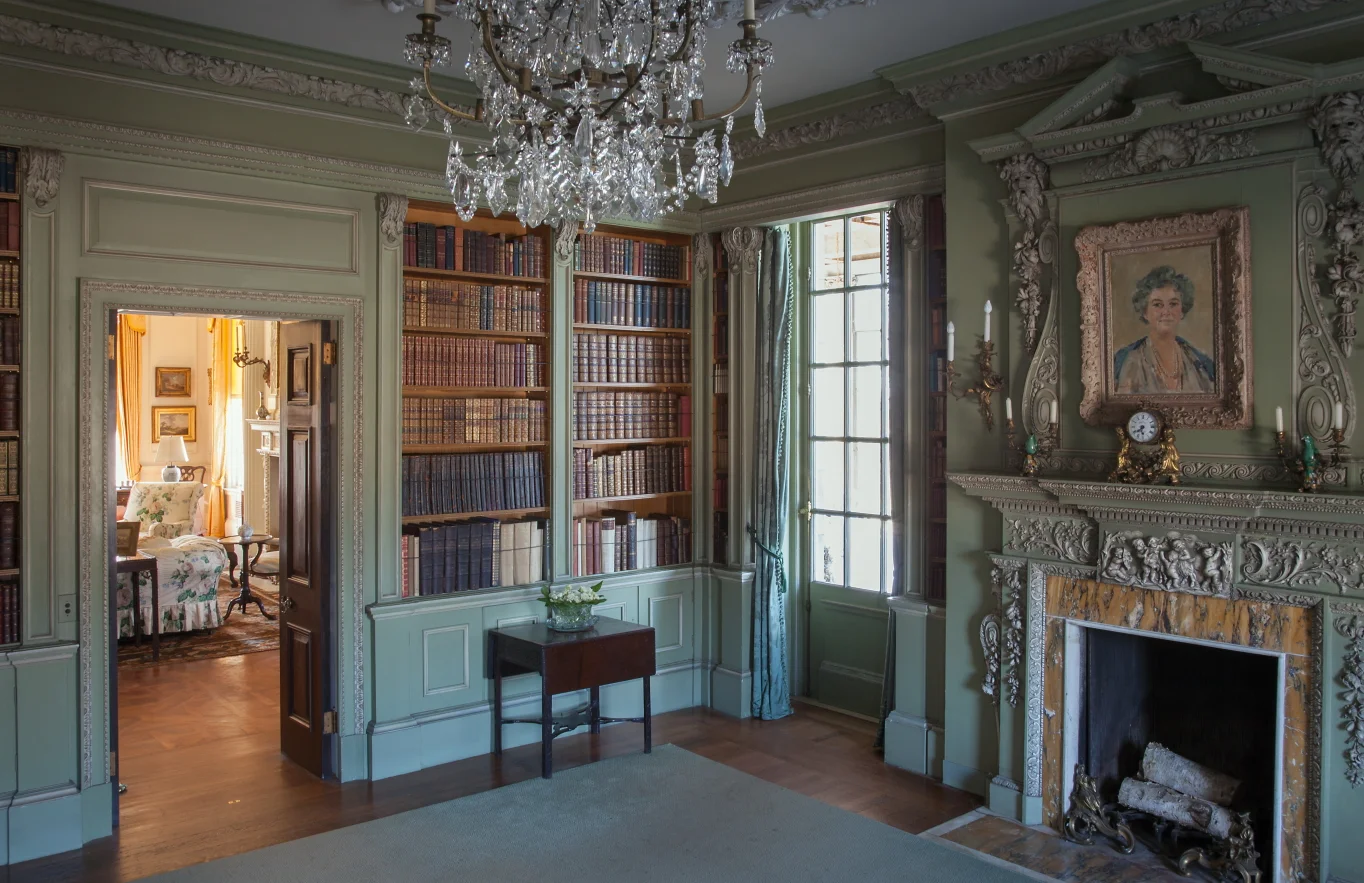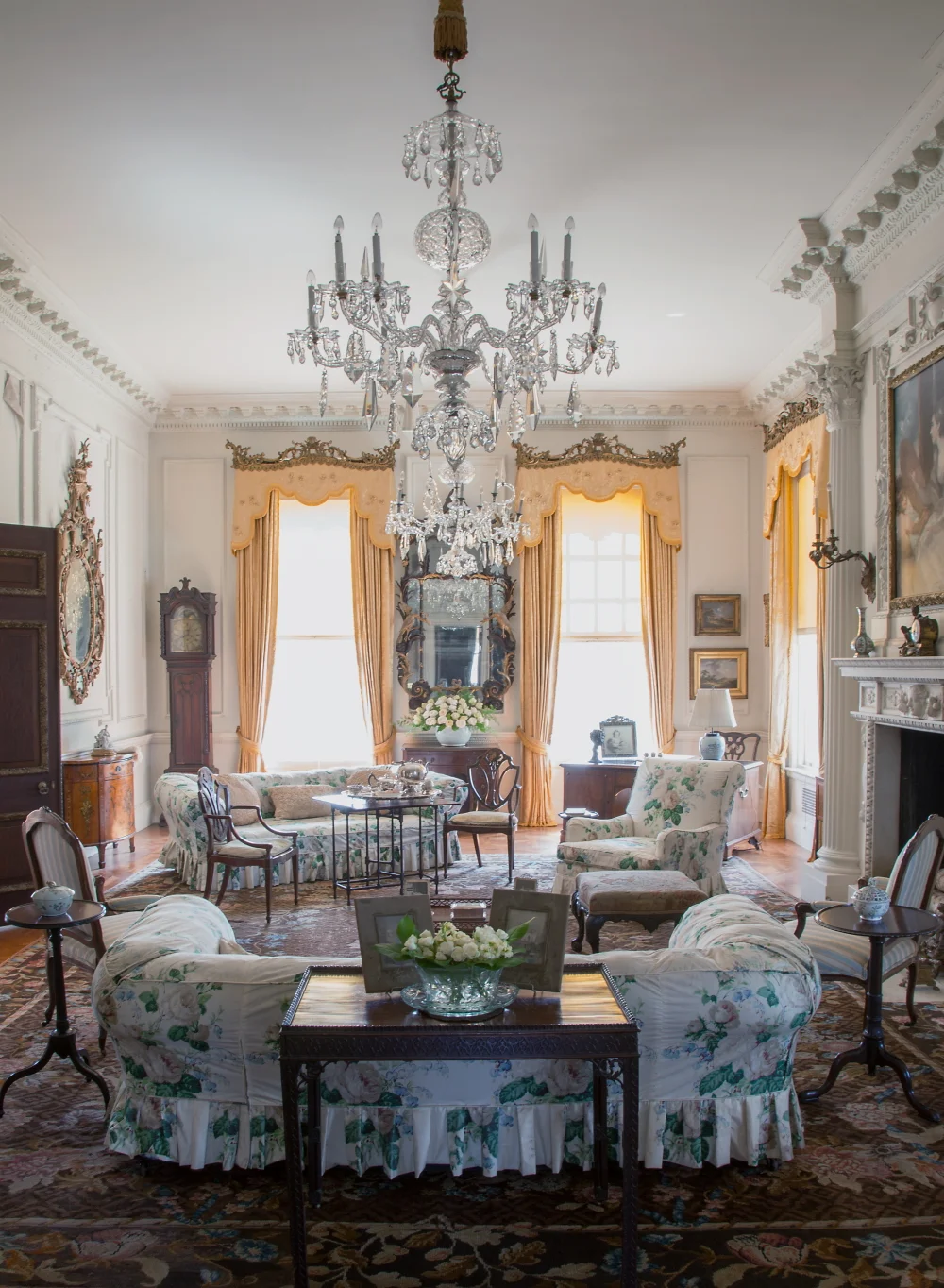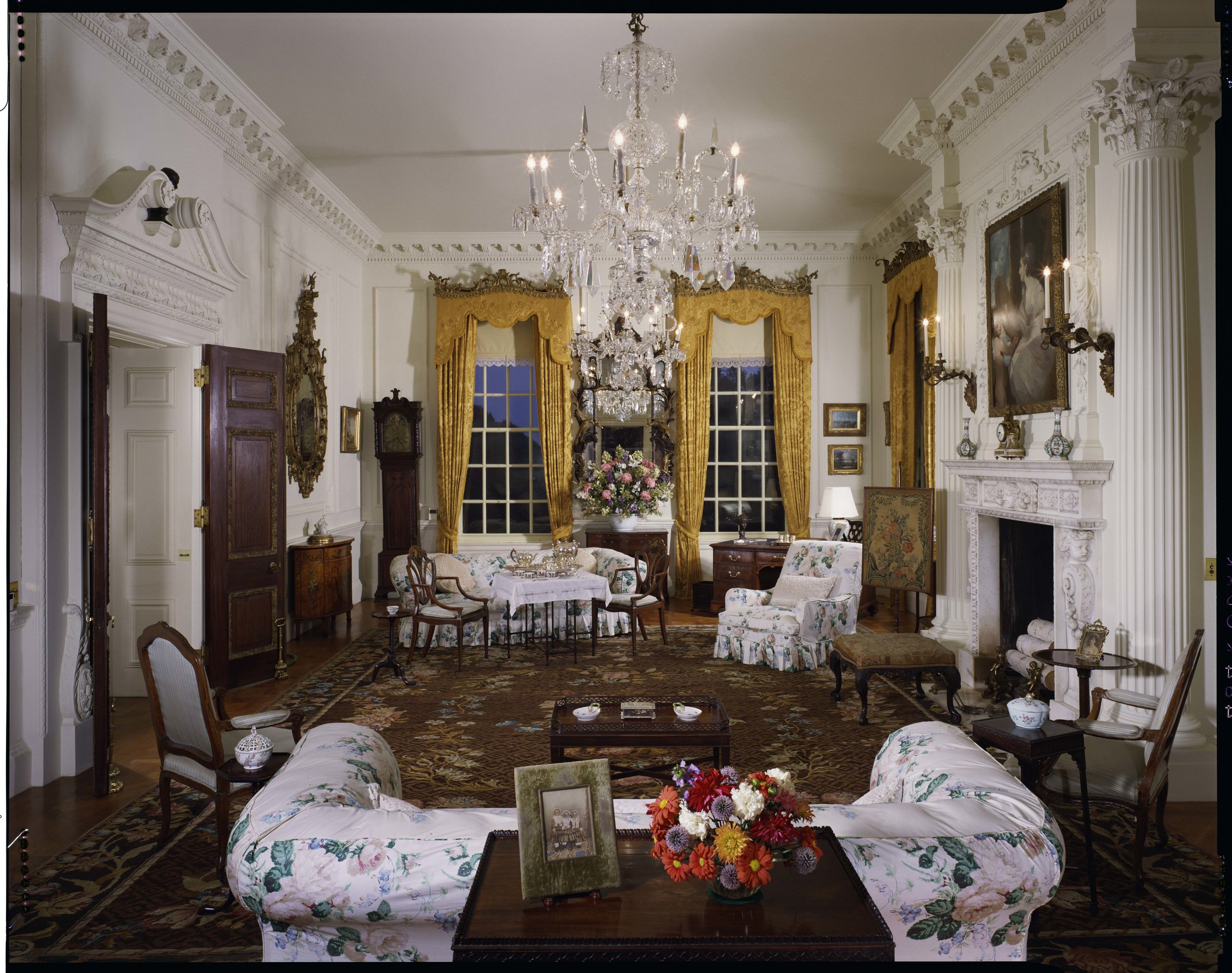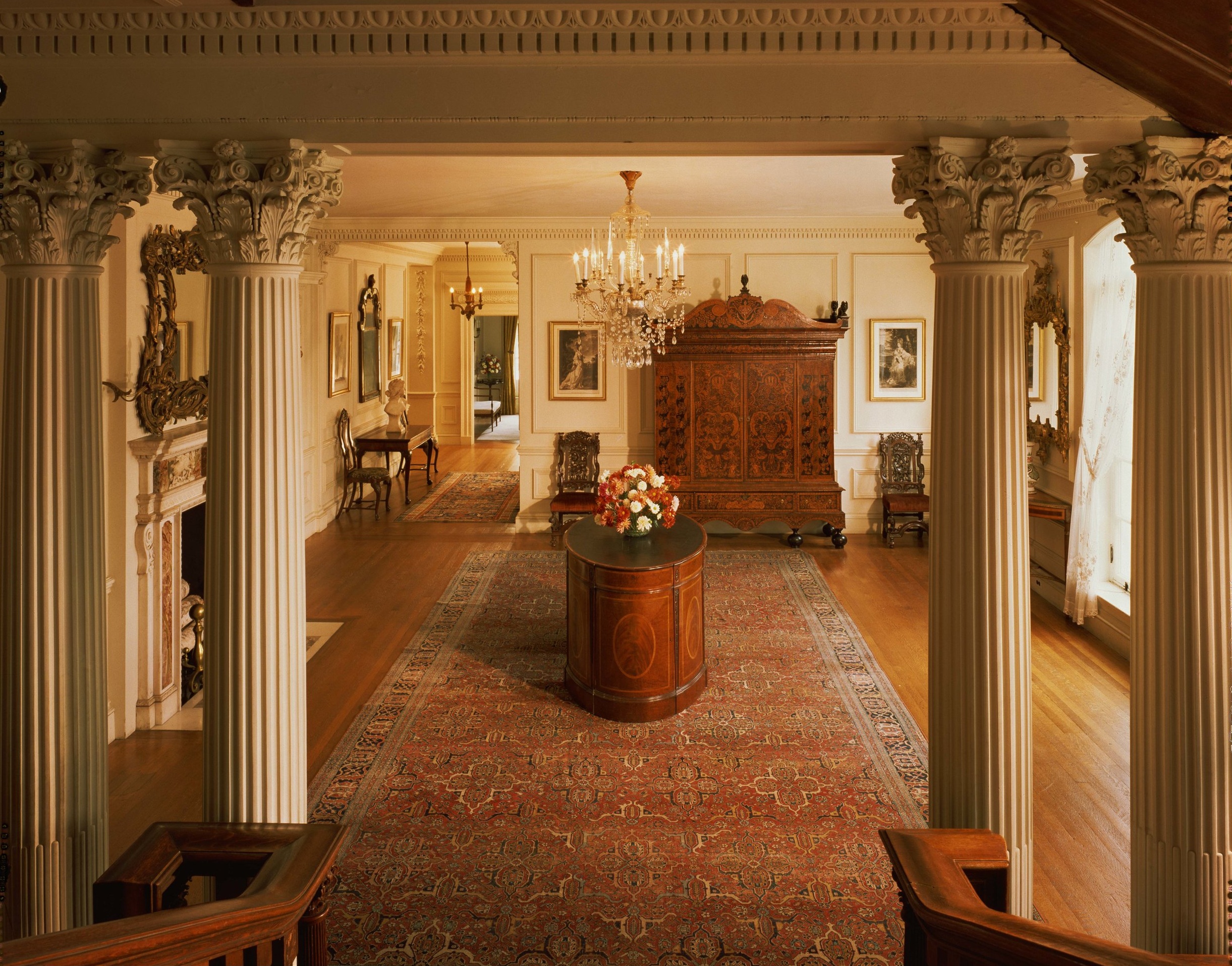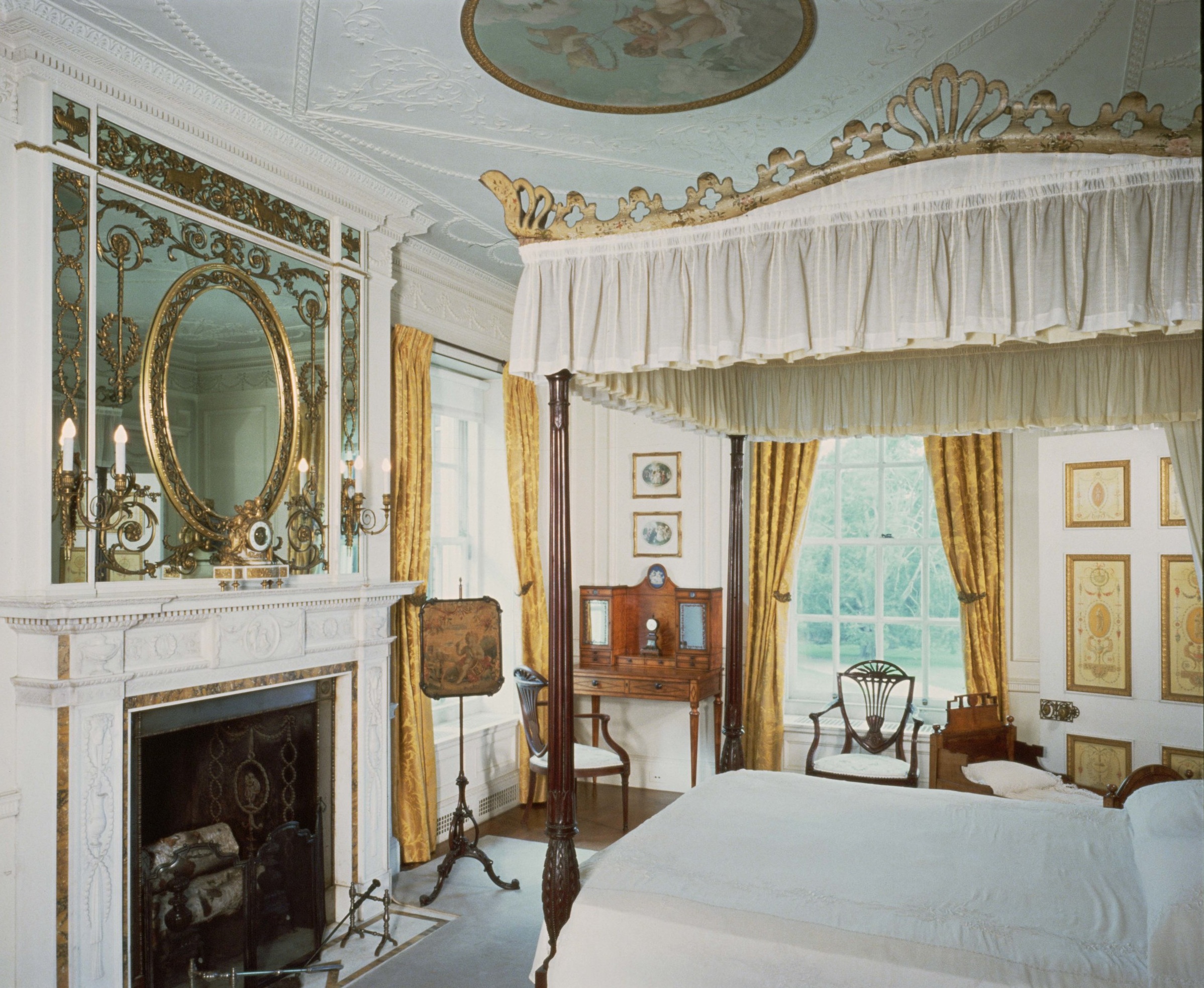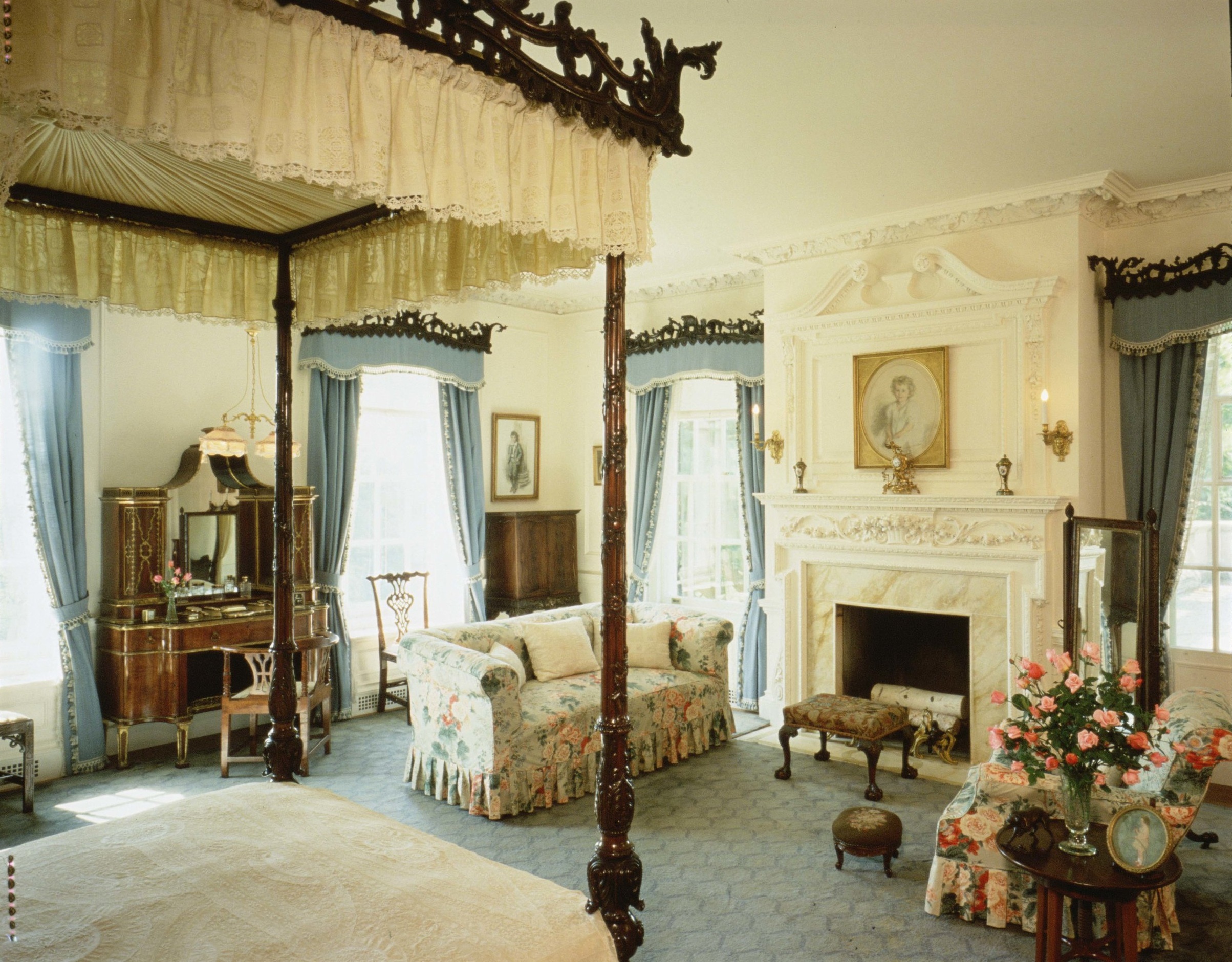WESTBURY HOUSE
— FIRST FLOOR —
click title to view description —
FRONT HALL ↓
Guests enter the first floor through a small vestibule and are welcomed into the large, front hall. Immediately, visitors are immersed in an atmosphere of magnificence that is accustomed with such a remarkable home. The fine, hand-carved paneling is a precursor to the art and design of the entire house in the Georgian Period—England’s golden age of furniture and interior design. Also located in this room is a Bengal tiger, a souvenir trophy from the Phipp’s honeymoon safari to India.
click title to view description —
MRS. PHIPPS' STUDY ↓
Moving on from the Front Hall visitors will enter Mrs. Phipps’ Study, where there is a collection of the requisite encyclopedia, history volumes, five collections of Shakespeare, limited editions of English poetry, as well as popular fiction and non-fiction from the 1930s-1950s. The room also contains a “hidden” closet which held Mr. Phipps’ valuable violins.
click title to view description —
WEST PORCH ↓
Guests enter onto the West Porch and view a great ceiling composed of steel beams covered in oak. The floor pattern and material matches that of the Front Hall. On the east section of the floor is covered opening for an abandoned service lift, which was installed in 1924 to help serve tea. That same year the porch was clad in limestone, expanded to the present three-bay configuration and in the mid-1930s hydraulic windows were installed.
click title to view description —
WHITE DRAWING ROOM ↓
When visitors walk into the White Drawing Room they will see a tea table set with the Phipps’ marvelous silver, some of which dates to the 18th-century. This is where family and friends would gather for tea. Included in this room are more personal fine art of the Phipps' children.
click title to view description —
RED BALLROOM ↓
This room was and still is a central location for gala entertainments. Just after WWI the original narrow gallery was expanded to accommodate the Peggie Phipps’ introduction to society, but construction delays resulted in the affair held in New York. Tall windows and French doors lead onto a terrace that offers a spectacular view of the Grand Alee.
click title to view description —
DINING ROOM ↓
This elegant dining room was originally designed by George Crawley for Henry Phipps’ Fifth Avenue townhouse. Before the townhouse was demolished, the entire room including the ceiling, mantel and wood paneling, was moved to Westbury House in 1924. Prominently located in this room is the double portrait by John Singer Sargent of Jay’s mother, Mrs. Henry Phipps and her grandson Winston Guest.
—SECOND FLOOR —
click title to view description —
SECOND FLOOR HALL ↓
As guests begin their journey through the second floor hall they will notice the hall is composed of dark oak paneling that lines out in a finely carved string course. The above white moldings and walls offer a bright contrast. Gilt-wood mirrors help illuminate the space with sunlight.
click title to view description —
THE ADAM ROOM ↓
The name for this guest bedroom comes from the late 18th century English architect and interior designer, Robert Adam, whose artistry inspired George Crawley’s design of this room. Adam’s simplified classical motifs with lighter colors contrast the bold, dark, Baroque designs, as seen in Westbury House’s dining room, that were popular in the early 1700s.
click title to view description —
MASTER BEDROOM ↓
This is the most personal room in Westbury House as its walls and furniture contain portraits of the children. An interesting architectural feature Crawley included in the bedrooms are unobtrusive “jib” doors--flush doors or panels which normally are the same finish as the surrounding wall so the doors are in effect ‘concealed’—connecting rooms or bathrooms.
click title to view description —
CHIPPENDALE BEDROOM ↓
This bedroom is decorated with hand-painted Chinese wallpaper, displaying colorful bird and butterflies. Margarita’s father, Michael Grace, would often stay in this room when he visited.


